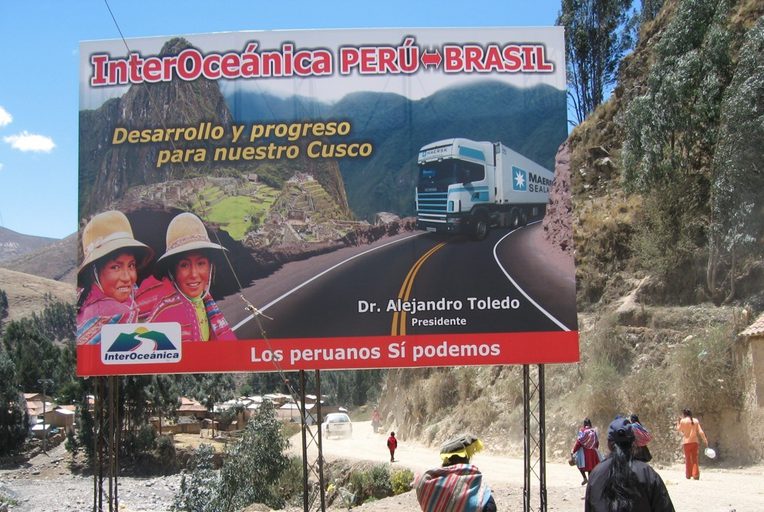Materials
From the Series: The Infrastructure Toolbox
From the Series: The Infrastructure Toolbox

Materials are integral to any infrastructural assemblage, carrying their own promise, transformative potential, aesthetic effect, and affective force. Infrastructural systems embed decisions made with respect to the optimum functionality and efficacy of their material fabric. These decisions rest on experience, experiment, and the diffuse understandings through which materials accrue reputation, value, desirability, and credibility in particular times and places. All materials have complex biographies that relate to their promise and their past. They are subject to promotional campaigns and their apparent functionality is routinely inflected by economic or political interests. They also display a certain autonomy from such concerns. The life-span of a material is not necessarily in tune with the projections and aspirations of the infrastructural form that it supports. The material relations that will effect particular modes of degradation and pollution—or, indeed, endurance and stability—cannot easily be anticipated. Indeed, infrastructural projects often produce material forms that are out of time with themselves, either not yet achieving their promise or, equally, outliving the excitement of their conception and inauguration, forced to coexist with expectations they were never designed to confront. A focus on the material life of infrastructural forms is thus one way in which anthropological studies might interrogate how human desires and material forces are mutually constitutive.

Concrete offers us a fine example of such entanglements. Human beings could presumably live quite well without concrete, but do not, on the whole, choose to do so: not in cities, not in the modern era, and not where infrastructures allow for concentrated populations and routine circulations of goods, people, and energy.
Concrete is a foundational material with qualities and effects that support our most mundane activities (Savage and Tyson 2009). At the same time, it is a paradoxical material. Its combination of plasticity and inflexibility, the synthetic origins that link it to human intention, and its particular mode of decay, which speaks of a bleak incapacity for absorption into the wider environment, collectively provoke complex associations of hope and despair.

The imaginaries that concrete provokes and responds to combine the material and the ideational. Concrete is a composite material. Cement, manufactured by the heating of clay and limestone, reacts with water to irreversibly bind the aggregates from which specific concrete forms are made. These aggregates are typically stone and sand, but it is in the mix that the specific characteristics of concrete emerge. Add steel, and the concrete takes on the tensile properties and strengths required for specific strains. Different stone brings different colors, material properties, and aesthetic effects. Adrian Forty (2012) suggests that what Frank Lloyd Wright called the mongrel quality of concrete has in turn fascinated and taxed the architects, engineers, and designers who want to exploit its capacity for delivering a clean line, a smooth surface, and an enduring shape and form—whether for the spectacular, the mundane, or the unseen. While solidly and intractably imposed on the environment, concrete also escapes classification because it has no intrinsic properties. This material does not exist in raw form.
Concrete emerges from processes of modern scientific experimentation and analysis, but its composite makeup results in a material that is open-ended and accessible to vernacular use and modification. It is an entirely synthetic material, but unlike other synthetics, it is routinely assembled in situ.

Cement is produced in factories and circulates as a generic product, ready to lend its binding force where it is needed. Despite its ubiquity, concrete is not generic in the same way. Each and every form of concrete carries a material history that refers back to the contingent mix of materials and the stories of extraction and ownership that surround them. Concrete, when interrogated, speaks of quarries, riverbeds, soils, and sands. It engages with water sources and other environmental forces that it must accommodate if it is to hold fast. Processes of extraction, construction, and transformation thus bind cultural and material relations together in ways that resonate with current debates on material vitality and nonhuman agency. These debates should play a greater role in our anthropological interrogation of infrastructural systems. Then, too, the focus on the material assemblage that ethnographies of infrastructure increasingly provide provokes questions that are, as yet, not routinely addressed in the new materialism literature. For example, as we debate how to theorize the human via the material, the point of interest is not simply that materials always carry their own vitality (Ingold 2011) or exert a degree of autonomous force or agency (Bennett 2010), but rather that this force is never generic, nor is it simply material.
To focus on the specificity of material agencies is to interrogate what it is that particular materials bring to infrastructural assemblages, to trace what economic and political trajectories they congeal, and to discover the specific relations that become integral to their ongoing existence. These relations might be the result of human intervention, as with maintenance, repair, and demolition. They might also involve the unplanned cracks, crevices, and ruptures that, in turn, invite new material accretions or incursions. A focus on the materiality of infrastructures invokes something beyond material life and seeks to address the complex entanglements of human and nonhuman lifeworlds.
Bennett, Jane. 2010. Vibrant Matter: A Political Ecology of Things. Durham, N.C.: Duke University Press.
Forty, Adrian. 2012. Concrete and Culture: A Material History. London: Reaktion Books.
Ingold, Tim. 2011. Being Alive: Essays on Movement, Knowledge, and Description. London: Routledge.
Savage, Jennie, and James Tyson. 2009. Concrete: A User’s Guide. Cardiff, UK.